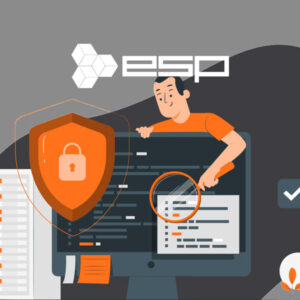Cyber threats and cybersecurity are growing concerns for most businesses these days.
One of the best ways to make sure you’re properly protected against cyber threats is to put a robust Security Operations Centre (SOC) in place.
A SOC detects and responds to cyberattacks that have managed to bypass your first lines of defence and security controls. In general, a good SOC should apply a layered approach, with multiple ways to identify and stop cyber threats.
In this brief guide, we’ll take a look at the ‘must-have’ features and functions of a good security operations centre.

1. 24/7 Threat Monitoring
Let’s face it – the whole point of a security operations centre is to stop any cyber threats in their tracks. To achieve that, you need to have 24/7, 365 monitoring in place.
We advise that you look for a SOC that hunts for threats in real-time, isolates any threats found, automatically analyses them, and assigns a severity level.
2. Vulnerability Assessments
The last thing you want when it comes to systems and data security is a leaky ship. A good SOC will cover all the bases with in-depth data source mapping (including cloud storage), threat intelligence, and vulnerability risk assessments.
3. Automatic Incident Response
When a threat occurs, you need your SOC to act quickly to contain it and automatically remedy the threat. A good SOC will alert you with notifications and provide operational IT support, if needed.

4. Security Intelligence
Security intelligence systems help you to stay ahead of any new threats in the current cyber landscape. Combined with 24/7 threat monitoring, security intelligence will continually update and maintain your SOC to optimise performance and ensure efficiency.
5. Compliance Activities
Regulatory compliance regarding data security is important in today’s digital world. In Europe, businesses are bound by the guidance set out in the GDPR regulation, which states that personal data must be kept secure and protected.
6. Tracking & Analytics
You should make sure that your SOC keeps a record of security events to help you meet regulatory compliance. Also, a good SOC will carry out frequent operational performance analysis to help you fine-tune your system configuration.

7. Choose a SOC-as-a-service Solution
The easiest and quickest way to implement a robust SOC solution is to go for a cloud-based SOC-as-a-service platform. Not only are they easier to implement, they are also updated and maintained automatically, without any network or system downtime.
To find out more, get in touch with one of our expert advisors today for a free consultation.
Here at ESP, we offer SOC solutions that tick all of the above boxes. You are guaranteed to get an around-the-clock, 24/7, 365, fully-layered cybersecurity solution.
To find out more, get in touch with one of our expert advisors today for a free consultation.






